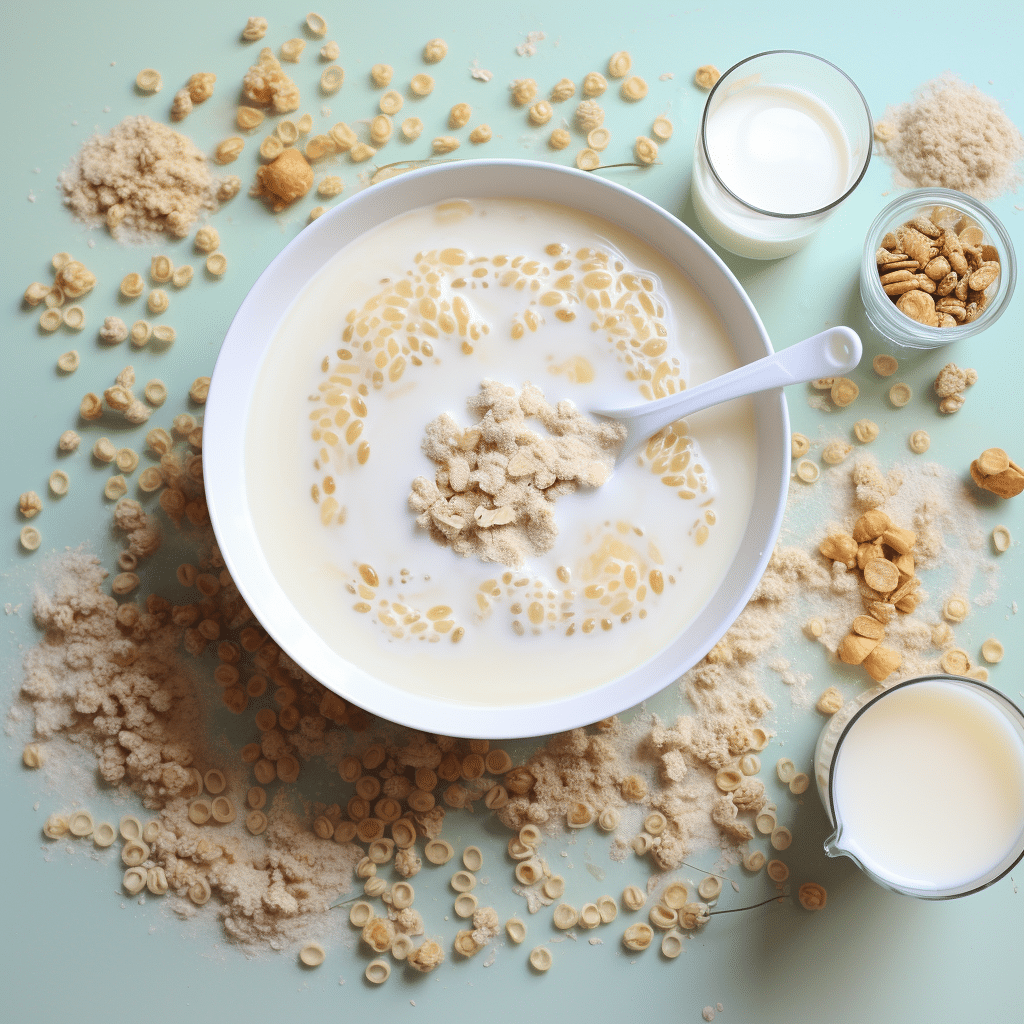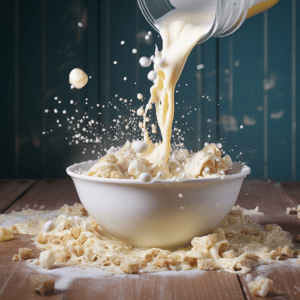
Mixing Baby Cereal with Breastmilk: A Guide
If your baby is over six months old, it’s time to introduce solid foods to them. This is because their digestive systems can now digest substances other than breastmilk or formula.
However, introducing solid foods is a complex undertaking. Many parents endure numerous difficulties, mainly if this is their first child. If you’re a parent like this, you’re undoubtedly wondering if you can mix your baby cereal with breastmilk.
Yes, you can mix your baby cereal with breastmilk to answer your question. This has proven to be one of the most effective ways to introduce solid foods to babies.

Below are some easy steps on how to mix your baby cereal with breastmilk:
- In a bowl, place a small amount of baby cereal. Put about one tablespoon of baby cereal (such as rice cereal) in a bowl. It would help if you began with a tiny quantity.
- Add a small amount of breastmilk to the baby cereal. 60-75 mL of breast milk should be poured into the cereal in the bowl.
- Mix the baby cereal and breastmilk. Stir the breastmilk into the baby cereal until the consistency resembles melted ice cream. Keep in mind that your baby’s reflexes may cause them to gag if the food is overly thick. Add extra 15 ml of breastmilk if the cereal isn’t runny enough.
- Serve the cereal to your baby. You can serve your cereal once it has thinned out. You don’t need to heat or sweeten the baby cereal before serving it to your baby, but if it’s too cold, your baby may refuse it. Microwave the cereal for 15 seconds on half power to warm it up. Before giving it to your infant, always stir it and check the temperature.
- Over time, try thickening the baby cereal. After a few weeks, reduce the amount of breast milk you use once you’ve determined that your infant’s swallowing ability has improved. Every few weeks, reduce the amount of breastmilk you add to the cereal by 15ml until you’re using equal parts cereal and breastmilk.
- Offer your infant more baby cereal over time. Your baby can consume anywhere from three to nine tablespoons of baby cereal throughout the day by the time they are six to eight months old. This quantity can be spread out over two or three meals. Keep in mind that breastmilk should remain your baby’s primary source of nutrition. If your baby doesn’t eat much at first, don’t be afraid. They’ll probably require some time to adjust to the new meal. Inquire with your pediatrician about how much your infant can consume in each meal.
It is also possible to mix your baby’s cereals with fruits or vegetables. Below are steps on how you can mix your baby cereal with fruits or vegetables:
- Decide when to start offering your infant fruits and vegetables. Before you begin putting fruit and vegetable purees into the cereal, your baby should be habituated to eating cereal mixed with breast milk or formula. After a few weeks on cereal, most babies can begin consuming fruits and vegetables.
- Select a single pureed fruit or veggie. Start with a single veggie or fruit at a time so you can monitor your baby’s response. Start with easy-to-digest foods such as bananas, avocados, carrots, sweet potatoes, peas, and pears.
- Mix baby cereal with breast milk or formula in a bowl. Combine your baby’s normal amount of cereal with breast milk or formula. It’s okay if the mixture is a bit thick because the vegetable or fruit puree will thin it out.
- Add 5 mL of pureed fruit or vegetable. The cereal will thin out and have a faint fruit or vegetable taste. Any fruit or vegetable can be offered to your infant. Remember that your infant may refuse the mixture the first time you offer it but may appreciate it afterward.
- Combine the cereal with a variety of fruits and vegetables. You can start blending fruits and veggies with cereals once your child has tasted a range of them. Mix fruit and veggie into a bowl of cereal to make a tasty meal. You can also up the puree quantity to 10mls.
Is it Safe to Add Cereal to Your Baby’s Bottle?
Simple, one-ingredient foods with no added sugar or salt should be served to your baby. As a result, many new parents choose cereals such as oatmeal, barley, or rice.
It was formerly thought that putting these cereals in a baby’s bottle at night would help babies sleep longer and prevent them from waking up to feed. According to recent studies, there is no reason to suppose this is the case.
At this age, babies usually can’t sleep for more than five hours at a time. They also wake up automatically to eat, whether or not they are hungry.
The process has also proved risky since it increases the chances of your baby being choked.
How Should You Feed Your Baby Cereal
For the reasons stated above, no matter which cereal you choose to feed your infant when introducing solid foods, you should never put the cereal directly into the baby’s bottle. Instead, use a small baby spoon to offer cereal to your infant.
Get your child to sit upright after you’ve mixed the baby cereal with breast milk. After that, use the baby spoon to serve them the cereal. Because this type of feeding requires practice, it may become messy. You can gradually increase the thickness of the cereal as your infant learns to swallow and manage it.
As your baby enjoys the meal, gradually increase the amount you give them. Don’t force the cereals on them if they aren’t interested or don’t like it. In a few days, you can try it again.

Final Take
If you were wondering if you could mix baby cereal with breast milk, we hope you already have your answer. Always use a baby feeding spoon while giving cereal to your infant for the reasons stated above.